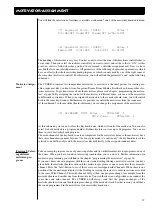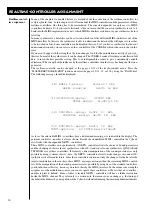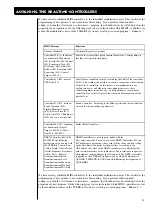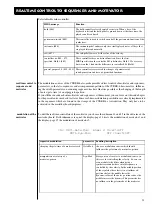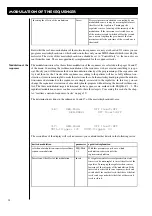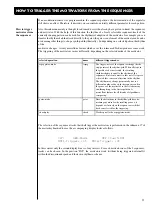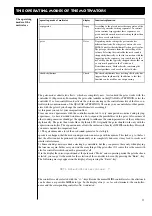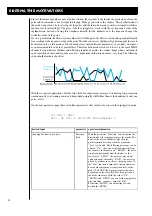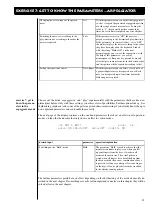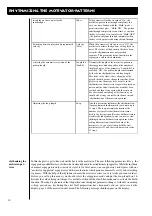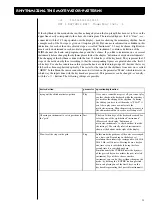
16
Programming of Basic-Programs
To store the new program select the submenu 20 with the alpha-dial. The following display-message wil
disappear:
<20| STORE KEYB Program in
? 31 Patch1
With the "+/-"-buttons and also with the "number"-buttons, you can select a program-number between 001
and 128. The name of the destination program, which will be overwritten is shown in the display. After
pressing the "enter"-button a dialog will disappear, which will ask you, if you really want to store the new
program at the selected number:
REALLY STORE KEYB Program in
? 31 Patch1
If you press the "enter"-button again, the new program will be stored at the selected number. The display
confims the store procedure. With the "exit"-button you can quit the masterkeyboard-edit menu.
You have now heard about the basic features of the masterkeyboardsection. Before coming to the advaanced
functions, it´s useful to get closer to the basic features. The best way to learn more about the masterkeyboard
features ist to work on the basics by programming basic patches. Later, you can use these basic patches as
feedstock for more complex programs. As an example, you can program the following basic programs:
1.) Layer 4-Program
Four different sounds layered in the same key window. This kind of program creates a rhich fat sounds and
is the basic programming for textured pad-sounds and Ambient voices. For this kind of programms you
need 4 keyboard zones in play-mode with different midi-channels all with the same key range.
2.) Split-program with two sounds on each side of the keyboard
Creating Split-Programs is with two layered sounds on each side of a selectable splitpoint is possible when
you use two pairs of keyboard-zones with the same key-range.
With this basic-programs it´s very easy to create other Sound-combinations by only changing the pro-
gram-change numbers of the used synths.
Each of the eight keyboard zones are transposable in a range of 3 octaves up and down. With this feature
you have for example the possibility to play a deep bass-line with your right hand . Keyboarder, with a
virtuos and fast right hand will welcome this featur. But also for layered pad-sounds it is very useful to
control different synths with one key in different pitches. For fat solo-sounds you can also layer four or
more synths all with different intervalls. With simple waveforms on the different synths you have a crea-
tive additive synthesis controlled by CYBER-6.
The transpose-parameter is available on submenu 4 of the masterkeyboard-edit menu. You can select this
sub-menu with the page-dial. The following display massage appears after selection:
<4> Keyboard Zone: 1
Transp:C 3 FootSw1:OFF FootSw2:OFF
At first select the keyboard-zone you want to transpose. Then you select the parameter "Transp" (Transpoes)
with the "cursor"-keys. After selecting the parameter you have two different ways to change the transpose-
value:
1.) change the transpose value between C0 and C6 with the "+/-"-buttons in halftone steps. The original
pitch is at the value C 4.
Storing the
masterkeyboard-
programs
Exercise 3:
Programming of
Basic-Programs.
Transposing
Summary of Contents for CYBER-6
Page 1: ...1 B E D I E N U N G S H A N D B U C H CYBER 6 The Realtime Enhancer...
Page 2: ...2...
Page 62: ...62 Warranty card...


















